Your handy 1965–73 Ford Mustang buyer’s guide
The first-generation Mustang’s popularity is proof that Lee Iacocca’s concept of a pony car had the staying power to influence other manufacturers and countless car enthusiasts to this day. When was the last time you went to a car show and didn’t see a first-gen Mustang? Or what about a late-model car meet with later Mustangs clearly influenced by the original’s iconic styling?
Let’s get a high level overview at every year of the first generation’s production, highlighting special editions so you’ll know which Mustangs are best for you!
Early 1965 (built in 1964)

Introduced in 1964 with a base price of $2368, the Mustang gave entry-level buyers the style of a high-end European Grand Tourer with the practicality of its stablemate, the Ford Falcon. Plus, the sheer volume of powertrain and trim packages made it possible to configure the Mustang to most folks’ needs and budgets. Even better, you could build your Mustang either as a hardtop or a convertible.
Entry-level Mustangs had standard bucket seats, a sporty floor-mounted shifter and Ford’s 170-cubic-inch “Special Six” inline-six engine and a three-speed manual, with an optional four-speed manual or Ford’s Cruise-O-Matic automatic gearbox. Upgrading to a V-8 was possible via 260-cu-in small-block (F-Code) or two versions (D and K-code) of Ford’s famous 289-cu-in V-8: the top model cranked out 271 hp, making the “K-code” designation the most desirable of the breed thanks to its aluminum pistons, solid lifters, high flow cylinder heads, heavy-duty crank, larger carburetor, and chrome valve covers and air cleaner. While K-codes are rare and highly prized, there was much more to the Mustang than the motor.
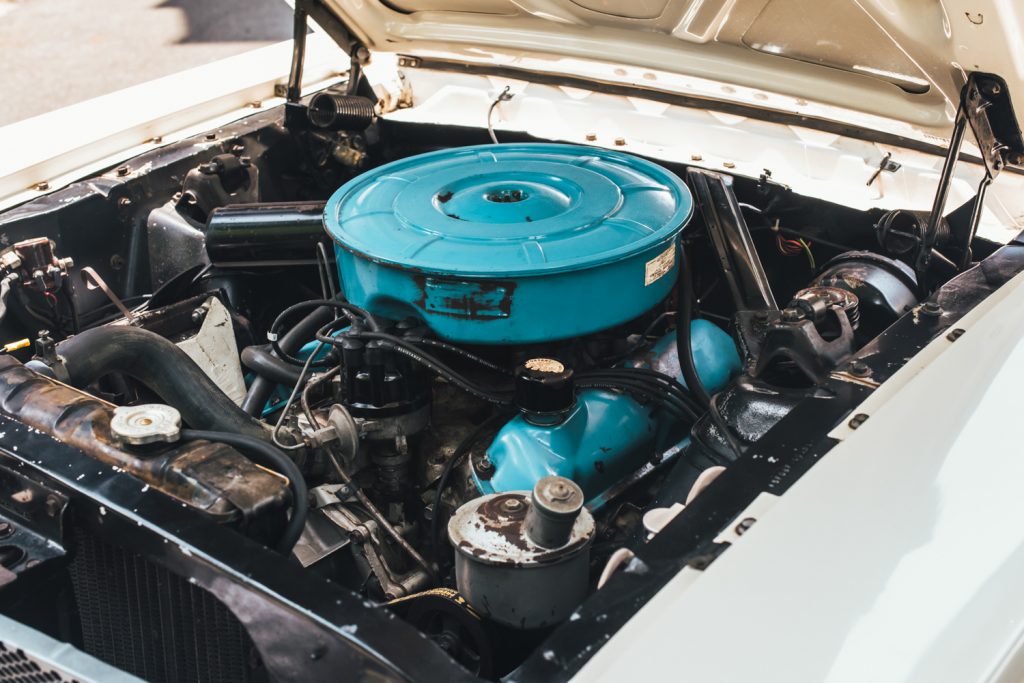
A slew of performance options were on the table: front disc brakes, a special handling package with retuned shocks/springs/enlarged front sway bar, and a limited-slip differential.
Making the Mustang as enjoyable as the styling suggests was simple, you simply picked from a bevy of colors and optional equipment including: paint stripes on the rocker panels, push button AM radio, day-night mirror, two-speed wipers, remote control side view mirror, padded sun visors, wire wheels, white or red line tires, and even a vinyl roof.
Aside from the premium for K-code examples, other options are notable for their value and curb appeal: rally pack gauges with integral clock and tachometer, full length console, power steering, power brakes and (of course) factory air conditioning.
With 121,538 made in 1964 and a whopping 559,451 in the full year 1965, it’s clear why the Mustang’s popularity remains today: everyone knew it was an instant classic.
1965 (full year of production)
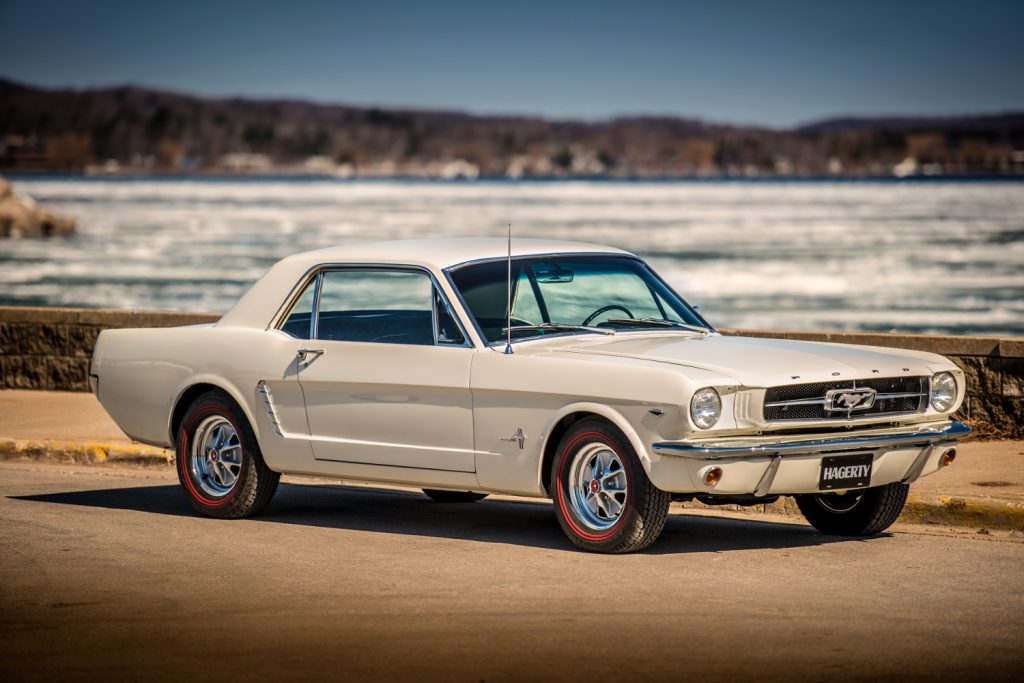
While all 1964-1965 Mustangs wore a VIN designation proclaiming production during the 1965 model year, the full year of production introduced the popular fastback body style. Priced between the hardtop and convertible, the fastback sported a wildly sloped roofline with unique rear glass and deck lid, giving the Mustang a more performance-oriented look over the hardtop coupe. This new look was the foundation for the new Shelby Mustang, which is discussed further below.
Powertrain changes were substantial during this year: the base I-6 was replaced with a larger 200-cu-in version, and the base 260-cu-in V-8 was swapped for C-code 289 V-8. There was a new middle-of-the-road A-code 289 and the range topping K-Code V-8 was still the top option. All engines now had alternators in their charging systems instead of a generator.
New for this year was also a GT Equipment Package, which is easily spotted by the fog lamps mounted in the grille. The GT also included a five-gauge pack instrument cluster, rocker panel stripes, a special handling package and disc brakes.
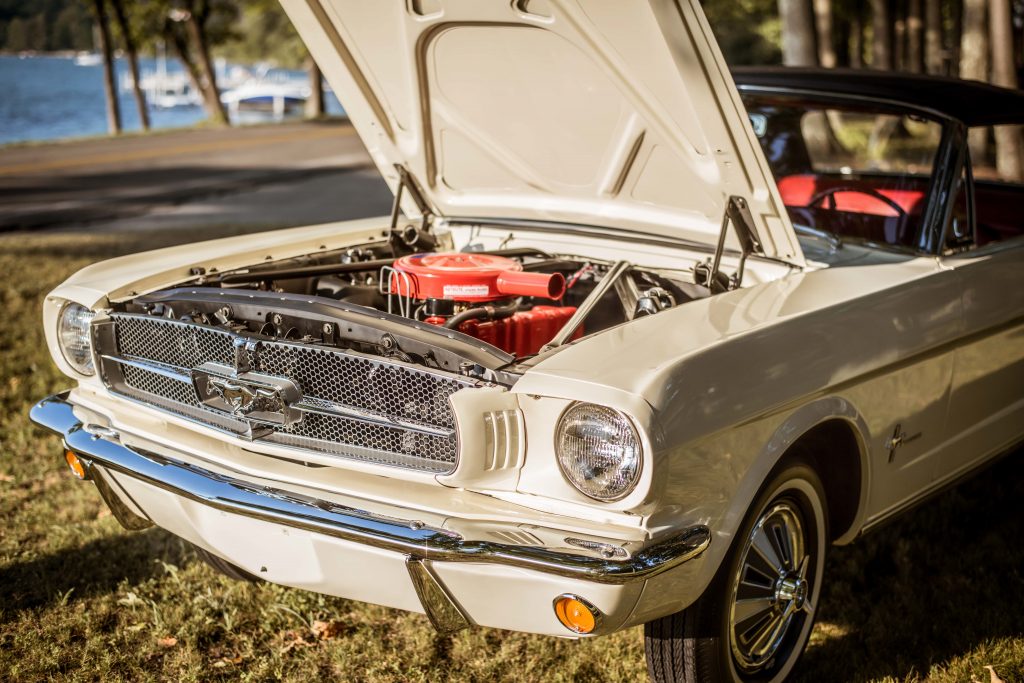
A special “Pony Interior” made production midway in the 1965 model year. This decor group included ponies embroidered on the seat backs, more luxurious seat bottoms and door panels, wood grain accents on the console and dash, the five-pack gauge cluster, and even a simulated walnut steering wheel.
There’s no possible way to give Shelby Mustangs the credit they deserve without dedicating an entire article to them, but 1965 was the first year of this legendary machine. The story starts with 513 fastback bodies (painted in Wimbledon white with Guardsman Blue rocker panel stripes – the top stripes were optional) being converted into Shelby GT350 using a large number of performance parts: chassis bracing, 15-inch wheels, improved steering boxes, functional hood scoop, revised intake manifold and exhaust headers to make the 289 V-8 achieve 306 hp, larger rear drum brakes, front disc brakes and a deleted rear seat. Race versions (dubbed GT350-R) had an impressive 360 hp and only 35 units were created for SCCA requirements.
1966
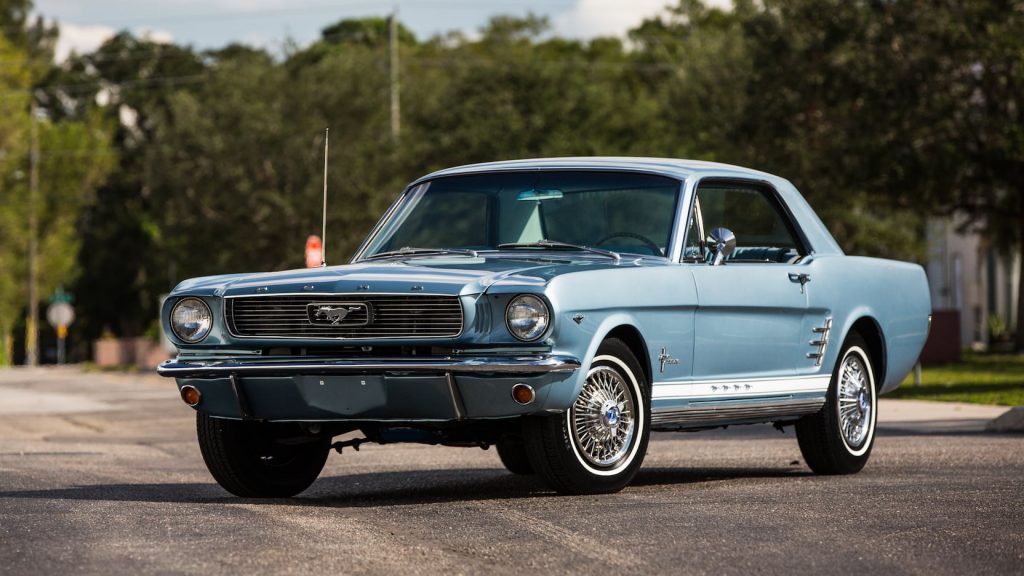
Changes in the second year of production were limited, rightly so as the Mustang passed the one million unit production mark this year. You can spot a 1966 Mustang from its less cluttered grill texture, chrome hood moulding, redesigned gas cap, new wheel covers, an upgrade from 13″ to 14″ wheels (six cylinder models only), standard 5-pod gauge cluster, redesigned side scoop brightwork and chrome panels over the rocker panels (deleted on GT).
Federal mandates meant that the once optional reverse lamps are now standard. Last year’s extensive list of optional equipment was also present in 1966, with the addition of an optional 8-track cassette tape player.
Shelby GT350s somewhat softened their tone this year, adding a rear backseat, a larger color palette, a quieter exhaust system and most surprisingly, an automatic transmission. Most exciting for 1966 Shelby Mustangs was the option for a Paxton supercharger to the 289 V-8.
1967
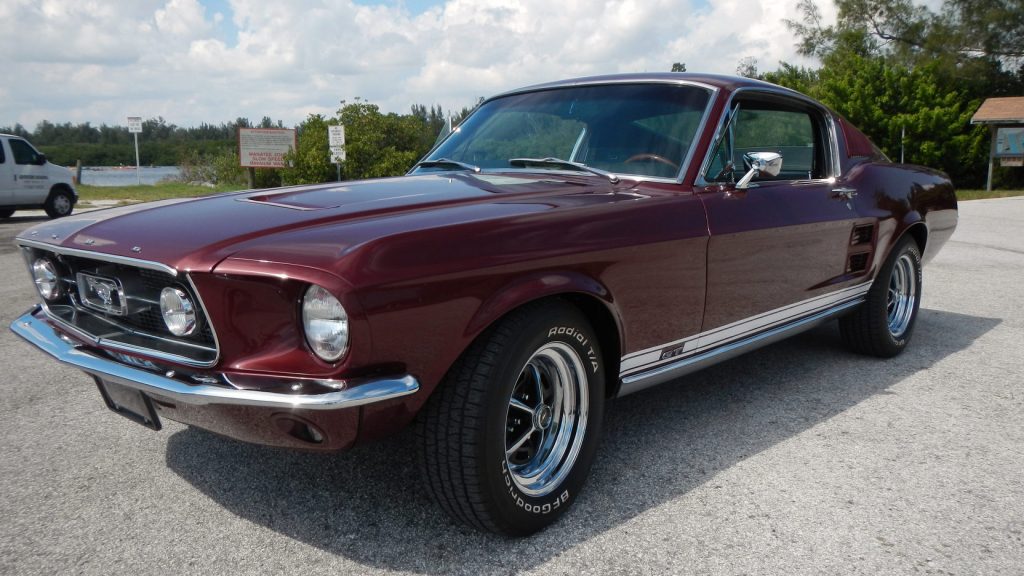
The Mustang sported a significant redesign, possibly to ensure its dominance over the all-new 1967 Chevrolet Camaro fashioned after its trend setting pony car template. A new body with fresh sheet metal was two inches longer (wheel base remained the same) with a wider track and redesigned front suspension to accommodate Ford’s 390 FE V-8 engine. Inside there were new trimmings, and a new dashboard with a pronounced twin cowl theme. Rounding out the major changes was a new tail light panel with a strong curve accentuated by the Mustang’s 3 light signature at each corner.
Powertrain choices remained the same, aside from the aforementioned 390 V-8 for GT models. Shelby GT350 Mustangs also had the 289 V-8 while the GT500 sported Ford’s massive 428 FE V-8 engine.
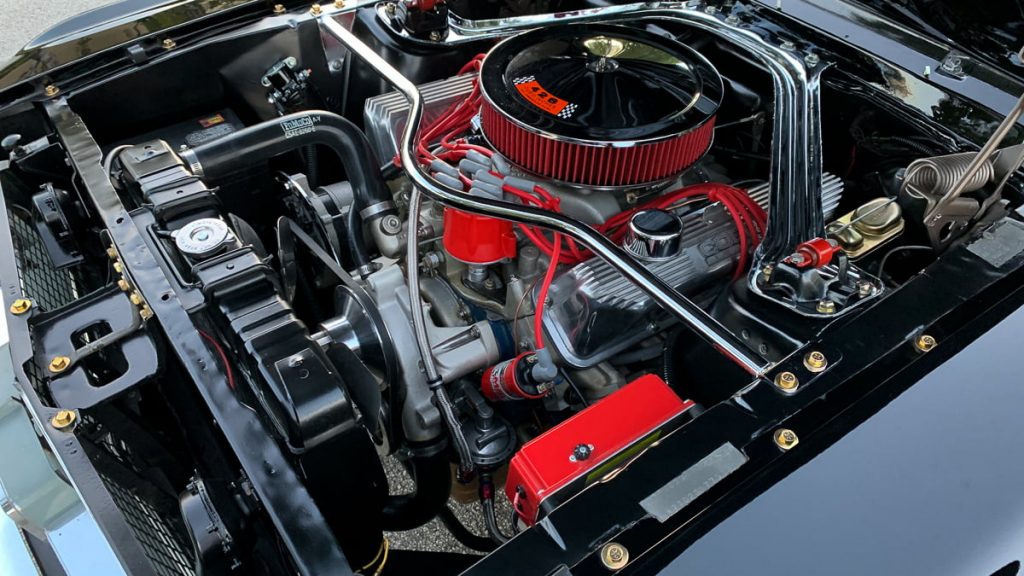
Mustangs received several noteworthy additions to the options list, including the Sprint option (similar to the Sprint 200 special edition, below), an AM/FM radio, passenger side view mirror, sliding tilt-away steering wheel (borrowed from the Thunderbird), overhead console with warning lights, a stereo-sonic tape deck and a new deluxe interior upgrade with aluminum trim (superseding last year’s Pony Interior).
Shelby had two models for 1967: the familiar GT350 and the new GT500. Shelby’s unique exterior design was further enhanced by fiberglass front end and grille sporting separate high beam headlights, roof-mounted and rear-facing air scoops, integrated spoiler with fiberglass trunk lid, and quarter panel inserts to create a dovetail rear spoiler. Mercury Cougar sequential tail lights (without the chrome trim) rounded out the cosmetics while the GT500 added a serious punch under the hood: a 428-cu-in V-8 tuned to Carroll Shelby’s specification.
1968
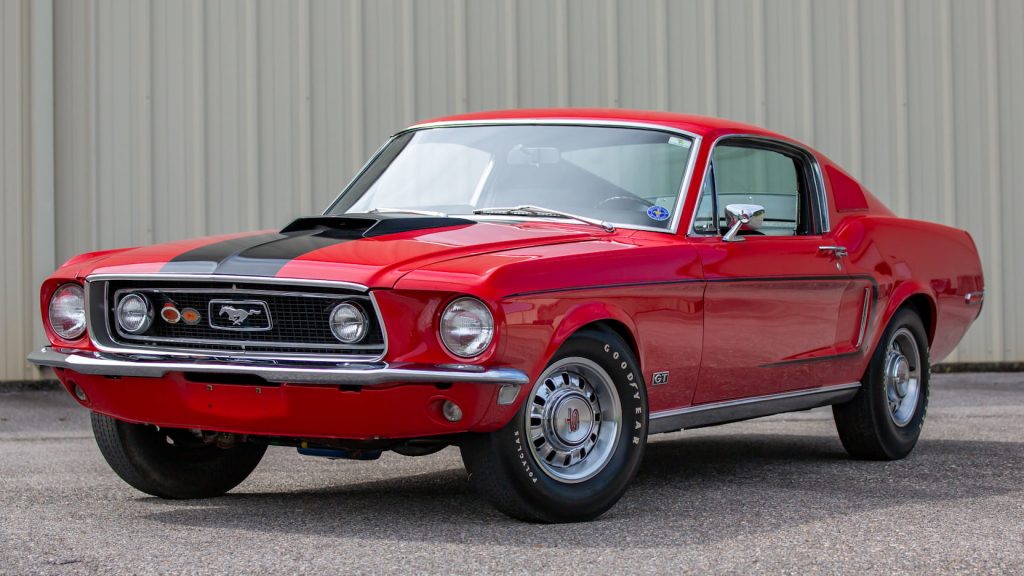
The 1968 model year had modest changes from last year’s significant redesign. The most noticeable change is the addition of side marker lights at each corner, in accordance to federal safety guidelines. Other changes like the deletion of the “FORD” lettering on the hood, standard three-point belts, a new grille and new “Mustang” lettering on each fender. A collision-friendly, impact-absorbing steering column was standard, as were fold-down interior door handles.
Mustangs were never short of color options, but an even wider assortment of colors were now available, with names like Passionate Pink, Madagascar Orange and Whipped Cream.
A Cobra Jet (R-code) 428 V-8 was available and the Shelby Mustangs returned, both in the GT350 (now with a 302 V-8), GT500, and a new GT500KR. The GT500 “King of the Road” was powered by a 428 V-8 which was suspiciously rated with the same horsepower as the GT500, but it’s believed these were underrated for power—on purpose.
1969
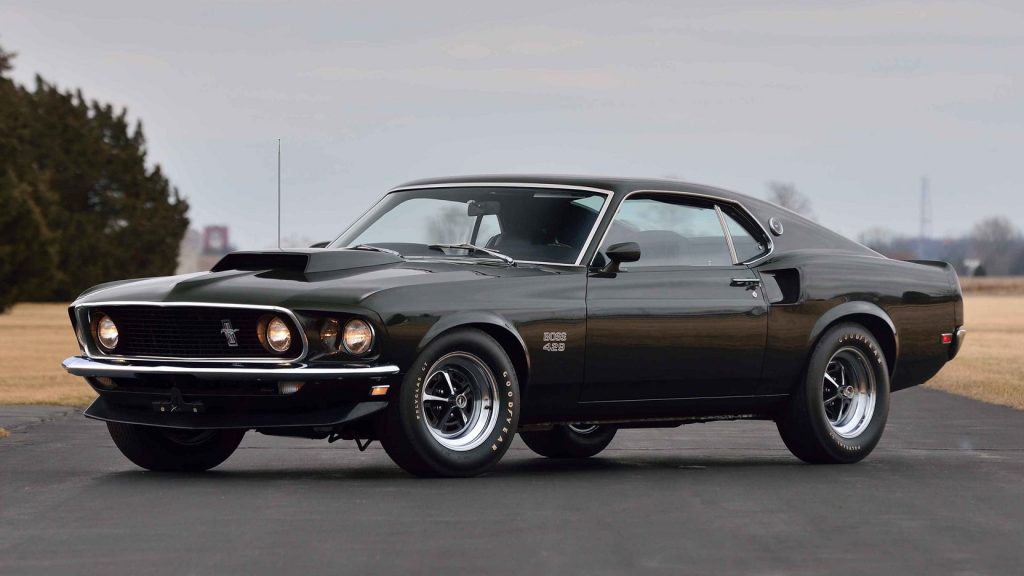
This year marked another significant redesign for the Mustang, gaining four inches in length, with a more aggressive take on the original Mustang’s front grille, reverse facing side scoops (Hardtop and Convertible), optional shaker hood scoop, a significantly larger cabin, new engines, and new trim levels with the same body styles (hardtop, fastback, convertible) seen previously. The 1969 Mustang was also lower with sleek styling, taking advantage of the steeper raked windshield: another sign that the pony car was growing into the extra-hot muscle car space.
The most exciting news for 1969 included the introductions of the Boss Mustangs, in 302-cu-in and 429-cu-in flavors. The Boss 302 was created with the Trans Am racing series in mind, while the Boss 429 was a creation satisfying NASCAR’s homologation requirements. Boss 302s came in many colors but wore a black painted hood with a C-shaped stripe along the bodyside. Compared to the Boss 302, the Boss 429 looked relatively boring with almost no extra ornamentation aside from the hood scoop (present on both models), and all versions came without air conditioning or an automatic transmission option.
There was a new 250-cu-in inline-six engine in addition to the standard 200-cu-in, and eight robust V-8 engine offerings: a 302 , a high-revving Boss 302, two 351 V-8s, a 390 V-8, two 428 FE engines (Cobra Jet with 335hp, or a Super Cobra Jet with Ram Air induction @ 360hp), and the range-topping Boss 429 V-8 based on the new Ford 385-series engines.
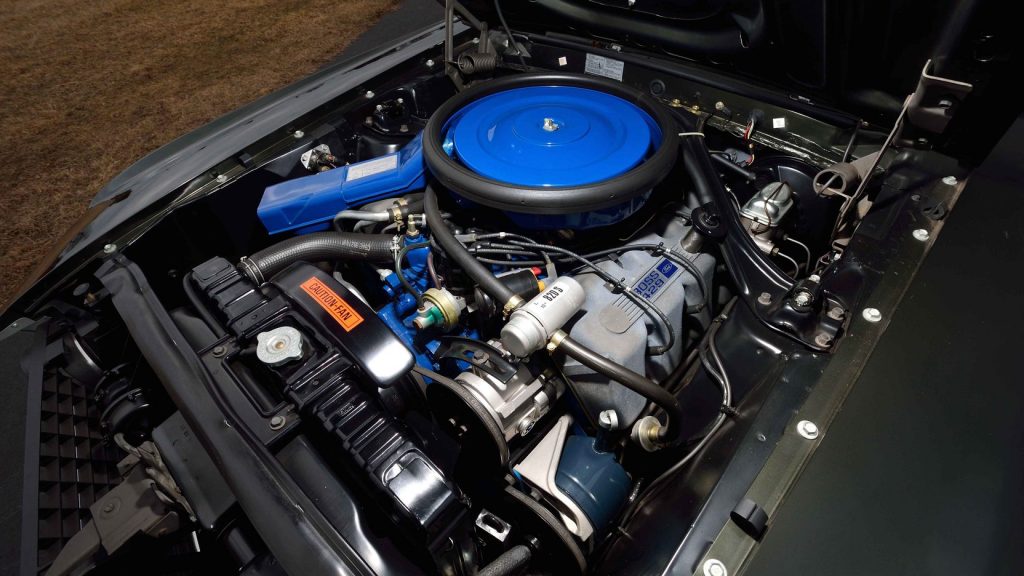
The options list for 1969 included new items like the rim blow steering wheel (horn embedded in the rim), tilt steering column, electric clock, intermittent wipers and a shaker hood scoop for Boss Mustangs. The color palette was just as strong as last year, but there were new trim levels added to the line up. The GT option soldiered on, but a new Mach 1 packaged added extra flair (hood lock pins, chrome exhaust, color-keyed side view mirrors) to go with the extra performance (handling package and many V-8 options). In response to the success of sister ship Mercury Cougar (and premium offerings from General Motors) the new Mustang Grande had a more luxurious interior with imitation wood trim, full wheel covers and a vinyl roof with Grande emblems on the C-pillars.
Shelby Mustangs continued under GT350 and GT500 guise, now with an even more unique front fascia with deeply sunken headlights and a longer hood with five scoops. The GT350 now had a 351 V-8 as standard. Ironically, the growth of Shelby’s Mustangs coincided with Carroll Shelby’s ending of his relationship with Ford.
1970
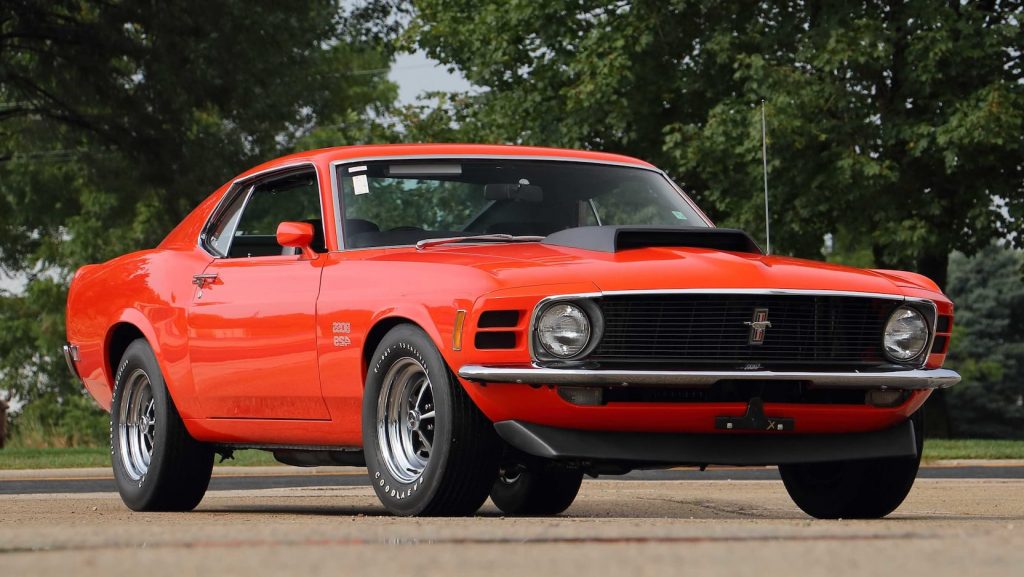
The Mustang received modest changes this year, most notably in a new front fascia with two lights instead of last year’s four: simulated scoops filled in the gap where the lighting used to exist. Last year’s side scoop was deleted. From the rear, all 1970s are differentiated by a new flat faced fascia with the signature three-bar tail lights housed inside a beefy chrome bezel.
Mach 1s had a unique grille utilizing squared-off amber lamps, finned rocker panel moldings with “Mach 1” cast at the front, and Mach 1 lettering on the deckled with a honeycomb appliqué around the rear gas cap.
Boss 302s wore unique stripes that started on the hood and rolled down the fenders, while Boss 429s had a black painted hood scoop and had the option of a white interior to go with last year’s black interior. This was the last year of the Boss Mustang, though the name soldiered on as an engine designation.
High-back bucket seats are now standard, and hardtops had an optional electric rear window defogger. 428-equipped Mustangs had the option of two Drag Pack axle offerings, in both 3.91:1 and 4:30:1 ratios.
Unsold 1969 Shelbys were given 1970 model VINs and resold to dealers. Changes included a new front spoiler, hood stripes, and carburetion and ignition changes in accordance with emissions regulations.
1971
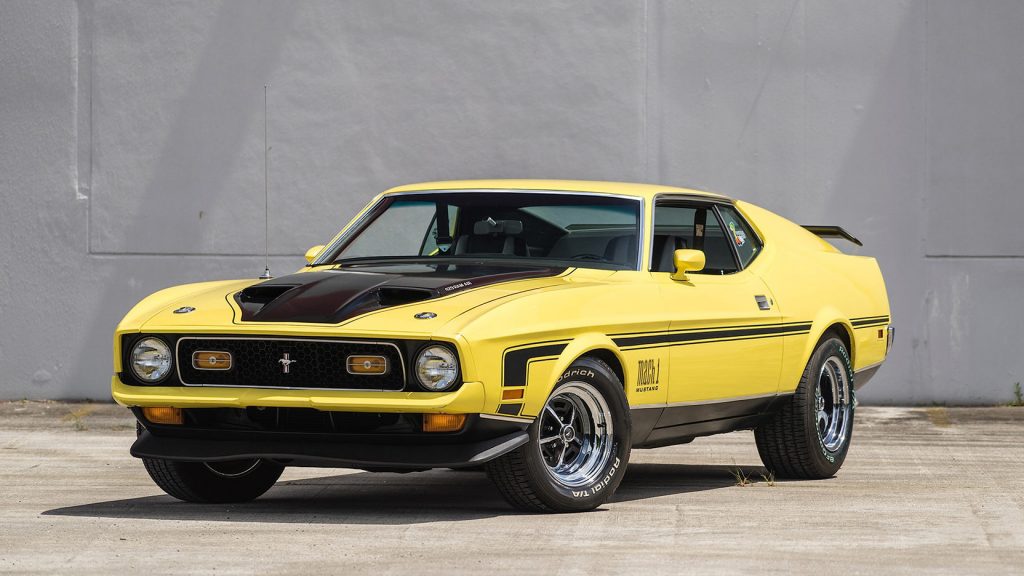
This year’s redesign made the Mustang over two inches longer (one inch of wheelbase increase), three inches wider and, on average, weighed roughly 50-200lbs more (depending on engine/body selected). All three body styles (Hardtop, Fastback, Convertible) remained. Styling deviated from Iacocca’s original vision, as it was heavily influenced by Bunkie Knudsen, Ford’s recently ousted President. A larger grille had a corralled pony emblem, or a smaller Mustang logo with red, white, and blue bars behind it. Chrome hood and fender lips made for a wraparound effect on the front fascia. New chrome trim covered the rocker panels and wheel arches, while painted front bumpers were also optional.
Bodyside lines were long and streamlined, with flush door handles from full size Fords, ending at a rear with traditional short deck proportions but new taillights with integrated reverse lights.
The small, 200-cu-in engine was jettisoned in favor of the 250-cu-in unit, while the Boss 302 and 428 motors were deleted for two 429 options and a robust four options of the 351 V-8s. This was the only year for the Boss 351. The Drag Pack option for 429-equipped Mustangs now had another, range-topping option in the form of a 4.30:1 axle with a No-Spin Detroit Locker differential.
1972
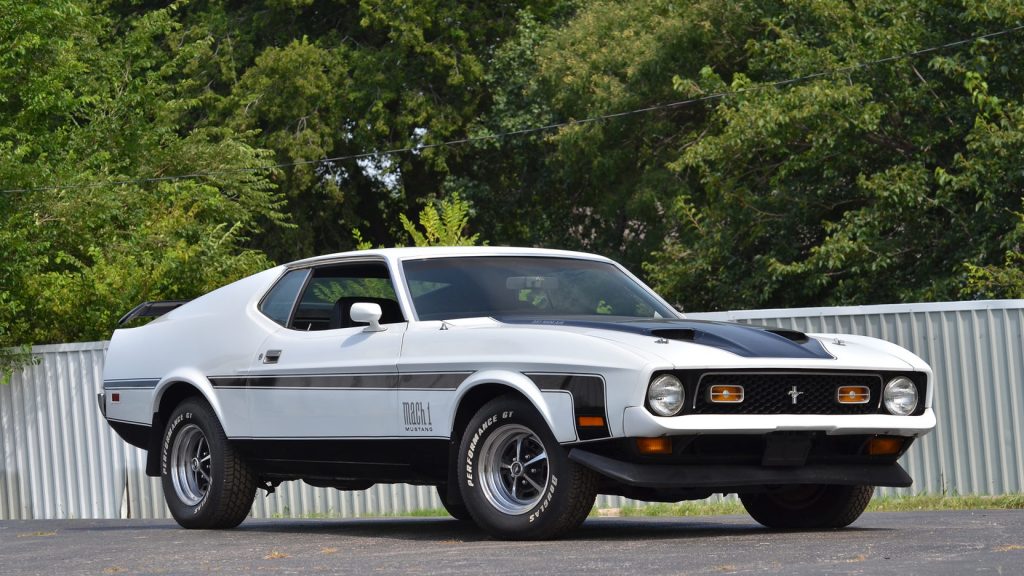
There were few cosmetic changes for the 1972 model year, most notably the rear emblem went from “Mustang” in block letters across the center to a stylized Mustang emblem in the right-hand corner of the deck lid.
The big news was the downward turn in engine options: only the 250-cu-in inline six, 302 V-8, and three variants of the 351 V-8 remained. This was a sign of things to come, not only for Mustangs, but for the auto industry in general.
1973
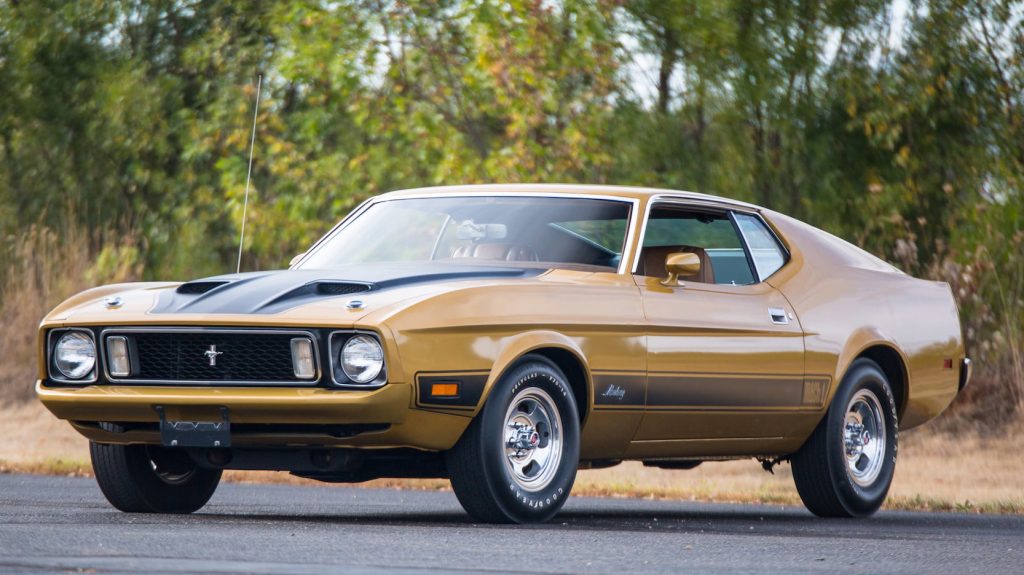
The first-generation Mustang’s finale ended rather unceremoniously: a new front end with revised grille, chrome headlight buckets, vertical signal lights, and the federally mandated 5-mph bumper made out of urethane. All three body styles were present, and the convertible would not be seen again until 1983. Aside from the deletion of the R-code V-8, all 1972 engines were still available but the top-tier 351-cu-in motors made less power due to ever tightening emissions regulations.
Special editions
While the first-generation Mustang changed significantly during its tenure, the appeal is undeniable: there is one for just about every taste and budget. So let’s now briefly highlight unique and desirable special editions of the first generation Mustang:
1964.5 Indy Pace Car
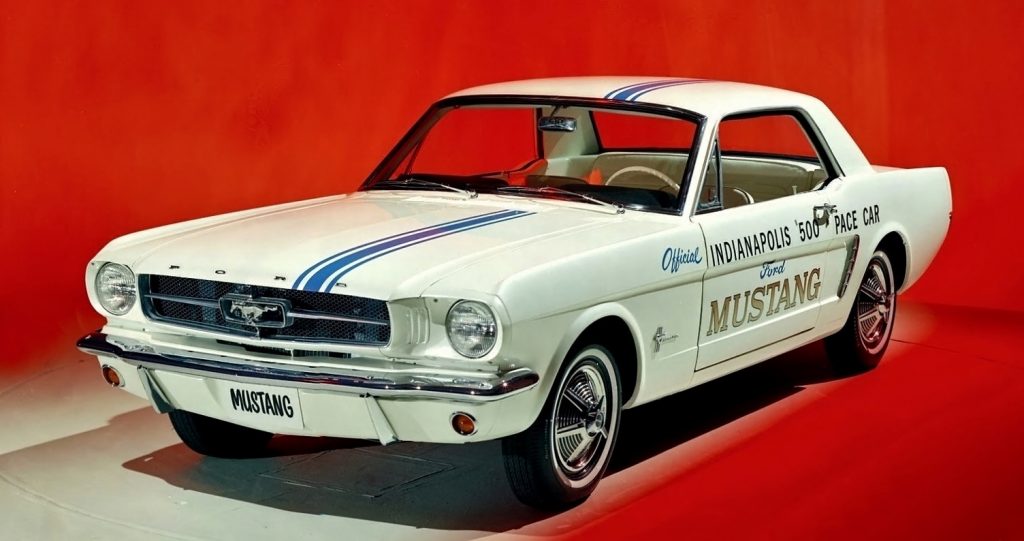
The new Mustang was used as a pace car (35 convertibles, D Code V-8) for the 1964 Indianapolis 500, and Ford made 190 hardtop replicas available on to dealerships limited basis. Each convertible was finished in Wimbledon White (white/blue/red interiors) while hardtops were Pace Car white with blue interior trim and the F Code V-8 engine.
Body Side decals matching the official pace car were implemented, and hood/roof/trunk had three blue racing stripes along the centerline. The pace car coupes left the factory with grease pencil codes on the radiator core support, including the words “PACE CAR” for posterity.
1966 Shelby GT350H
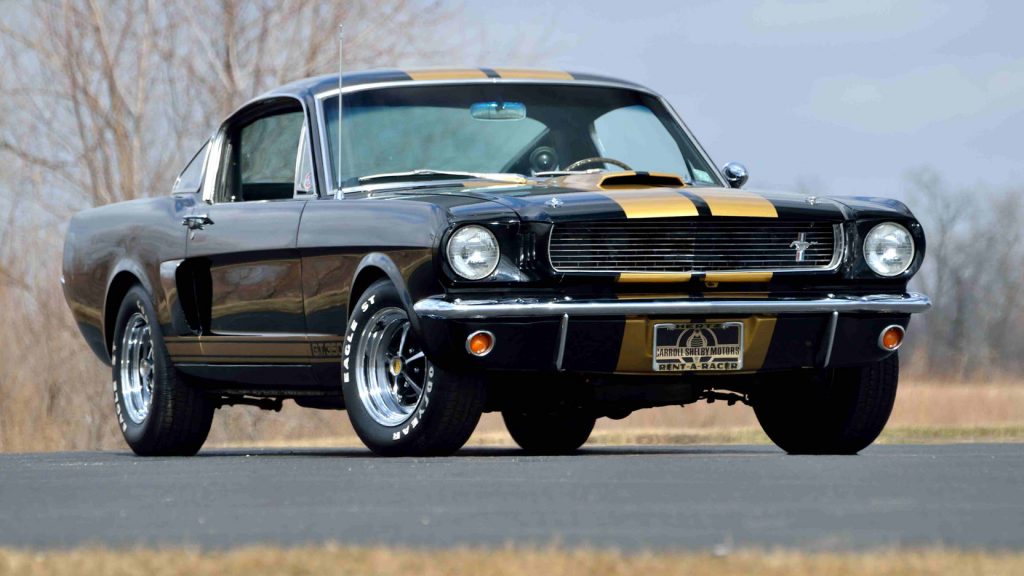
The GT350’s racing prowess inspired future Shelbys, including a GT350H model sold to Hertz Rent-A-Car for its innovative “Rent A Racer” program. Just 1000 GT350H units were produced, most were black with gold stripes, but red and green bodies were also produced. While early models had four-speed manuals (a move Hertz likely regrets) the remainder of the production went to an automatic transmission.
1966 Anniversary Gold Hardtop
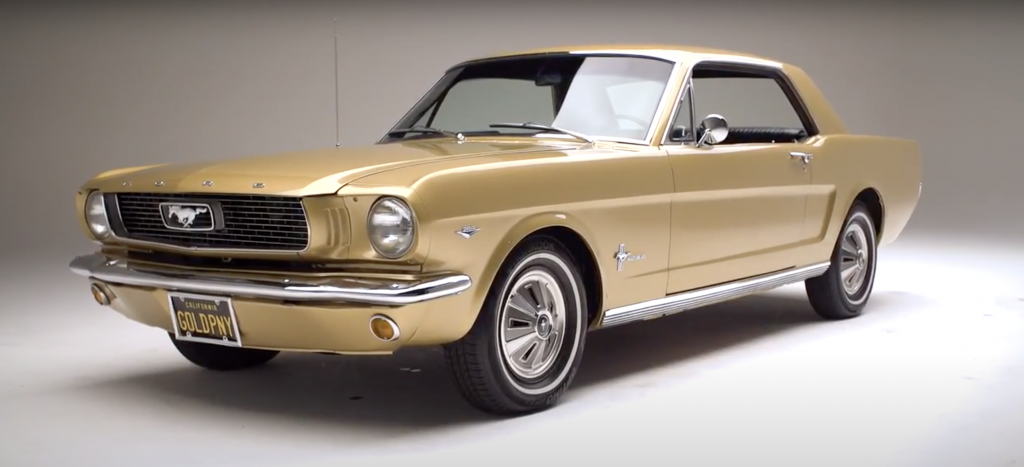
Ford made only 50 units of the Anniversary Gold edition to celebrate Mustang sales topping 1 million units in 1966. The Anniversary Gold editions were finished in “Anniversary Gold” paint and optioned with the C-code 289 two-barrel V-8 engine, the Pony Interior upgrade, and all examples are said to be hardtops only.
1966 Sprint 200 Edition

While V-8 powered Mustangs sold well on their own, a special Sprint 200 Option package added flair to Mustangs with the standard 200-cu-in inline-six. The Sprint included a chrome air cleaner, painted accent stripes along with the other options available to all six-cylinder Mustangs. Interior upgrades included a center console with courtesy lights, and the interior color was used to match the exterior accent stripes.
1966 High Country Edition
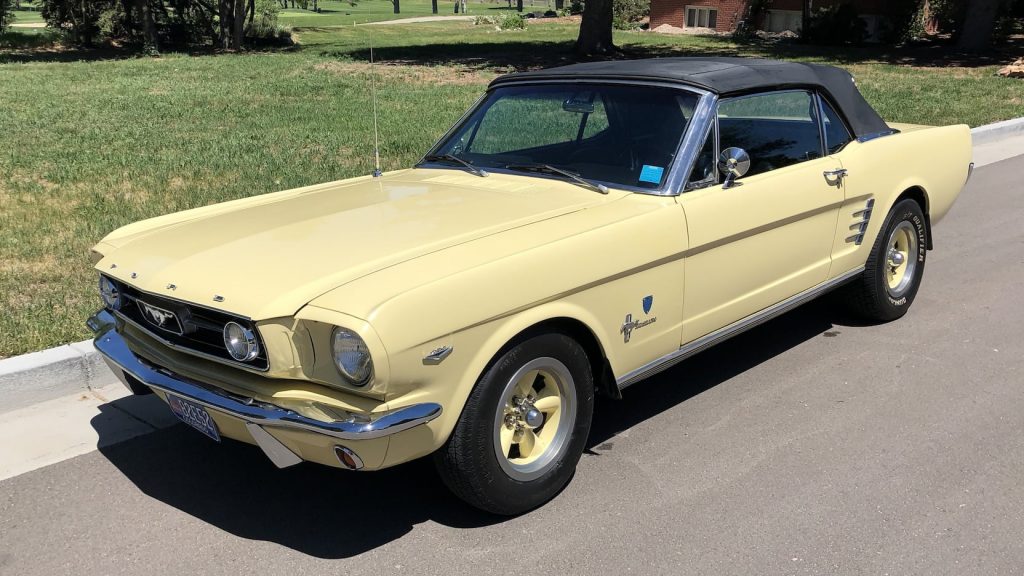
This was the first of many regional Mustang special editions and was sold by Ford dealers in Ford’s Colorado region. High Country editions wore one of three colors, Columbine Blue, Timberline Green and Aspen Gold, with blue crests near the Mustang fender emblems. These cosmetic upgrades could be ordered with any body style and powertrain combination. Only 333 copies were sold but this was a proof of concept that paved the way for the famous California Special edition Mustang.
1967 Special Editions
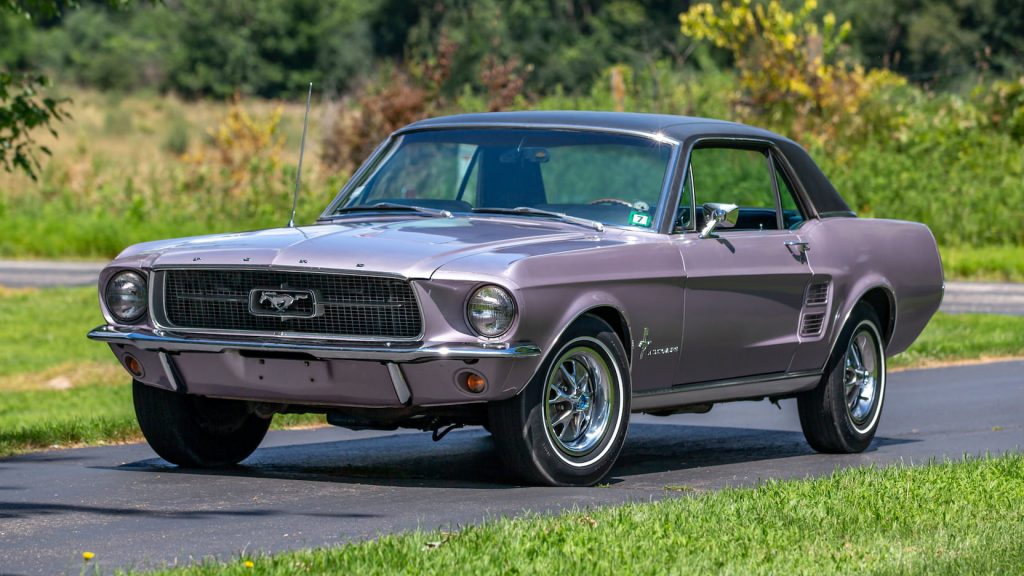
The High country Edition sold better this year (416 units) with no differences otherwise (just color and trim) in the package upgrade over other 1967 Fords.
The Ski Country Edition themed with, you guessed it, skiers in mind. These models came equipped with snow tires, ski racks, a limited slip differential, luggage rack and was painted in five exclusive, regional colors: Aspen Red, Breckenridge Yellow, Loveland Green, Vail Blue and Winter Park Turquoise.
The She Country Edition is said to be the creation of Ann Goodro (from Bill Goodro Ford) as she believed a Mustang marketed specifically to women would do well in the Denver area. Ann ordered 48 models painted in the following colors: Limelite Green, Bermuda Sand, Evening Orchard, and Autumn Smoke. The owner received a dash plaque with their name engraved in it and an orchid corsage to congratulate them on the purchase.
1968 California Special
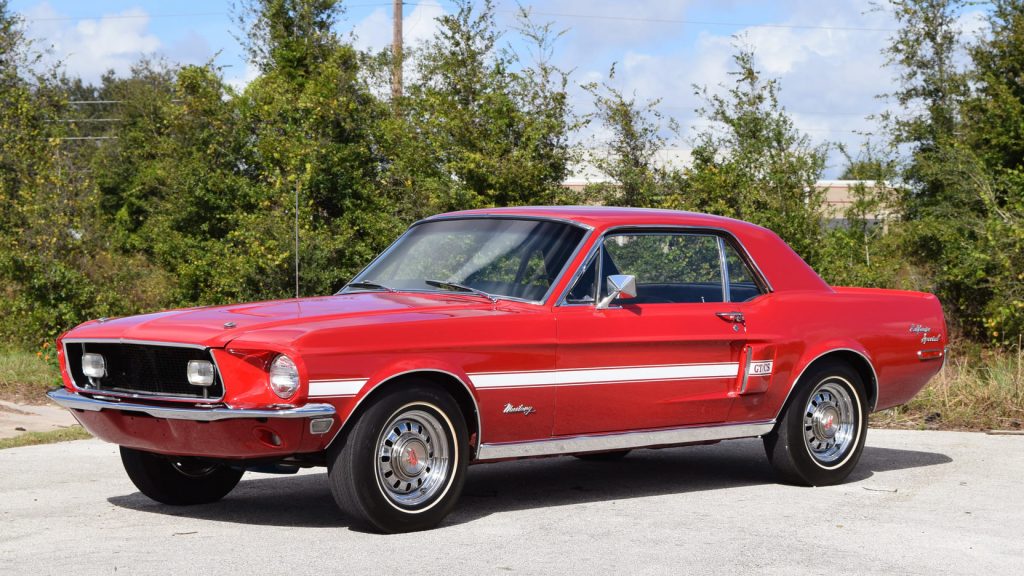
One of the more well known special editions is the California Special, also known as the GT/CS. The GT/CS’s success is partly because over 4000 units were produced, but mostly because it shared cosmetic upgrades with the Shelby GT500. Sold as a hardtop only, the GT/CS sports a fiberglass trunk lid and quarter panel inserts to create an elegant rear spoiler that sat above tail lights, themselves lifted from the Ford Thunderbird. The taillights were not sequentially lit like the Thunderbird, but unique emblems and red, black, or metallic medium blue side stripes ensured the GT/CS was not mistaken for a Shelby. A unique gas cap and non-functional side scoops completed the GT/CS transformation.
1968 Cardinal Special & Golden Nugget Editions
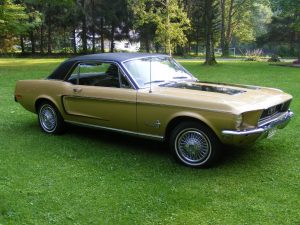
The Cardinal Edition was available to customers in North Carolina and Virginia, and came in either Cardinal Red or Wimbledon White in hardtop form only with the standard 200 inline-six engine. Other unique items included a flip up gas cap, diamond shaped cardinal emblems, a black interior with a matching exterior black stripe (similar to the GT).
All 525 Golden Nugget Editions were sold in the Seattle area, sporting sunlit yellow paint, black GT body side stripes and black paint on the recesses of the Mustang’s louvered hood. Like the She Country Edition, had a dash plaque with the owner’s name engraved on it.
1969 Mustang Limited Edition 600
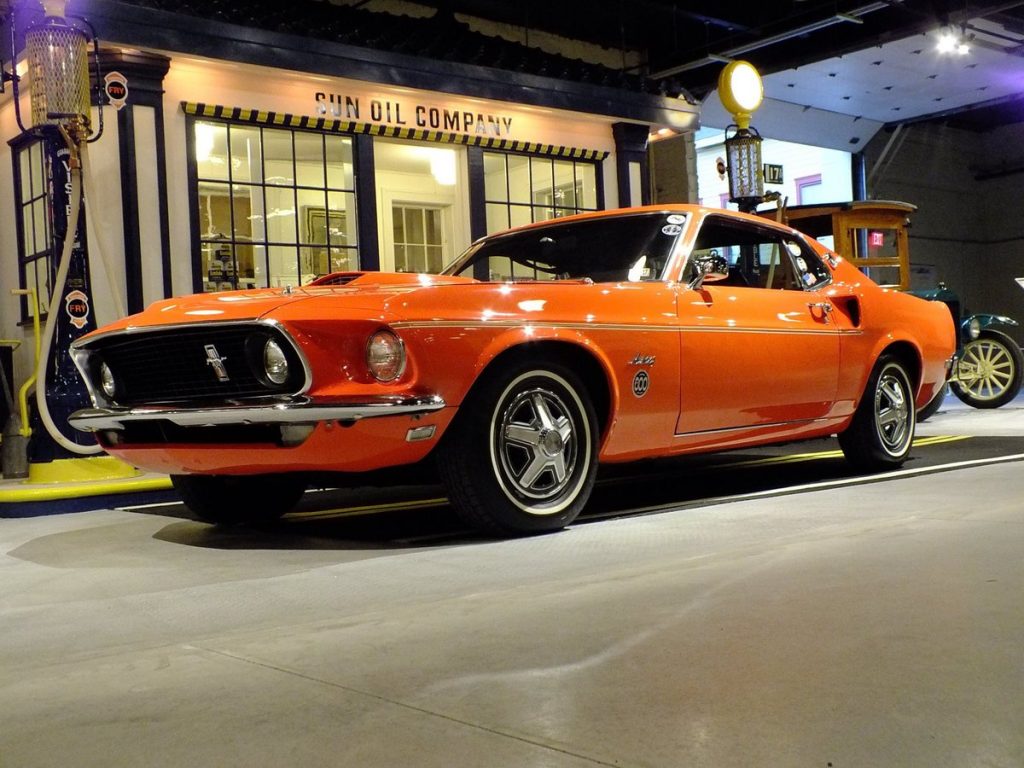
The Limited Edition 600 Mustang sold 503 units exclusively in the Philadelphia area. This limited edition was painted in either Power Red or Groovy Green with a hood scoop, the full wheel covers, a unique tape stripe and was only available on hardtop or fastback rooflines.
1970 Twister Special
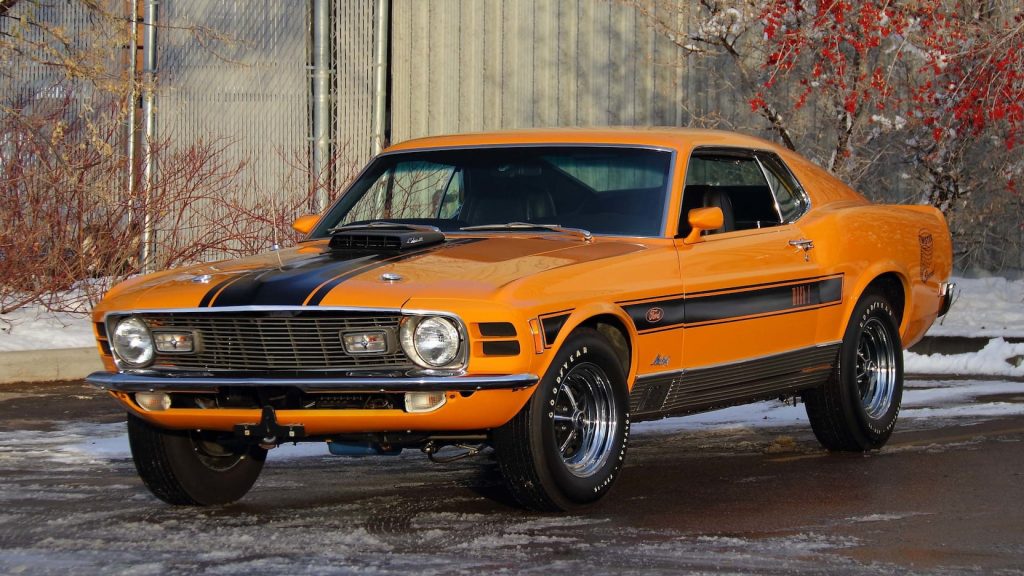
While the Twister Special was for Kansas City area buyers, this was not your average special edition Mustang. Twisters were based on the Mustang Mach 1 but added the drag pack suspension with either a 351 V-8 or the 428bSuper Cobra Jet. Twisters were only available in a single color: Grabber Orange with black hood and side stripes and unique tornado-themed graphics on the rear quarter panels.
1972 Mustang Sprint
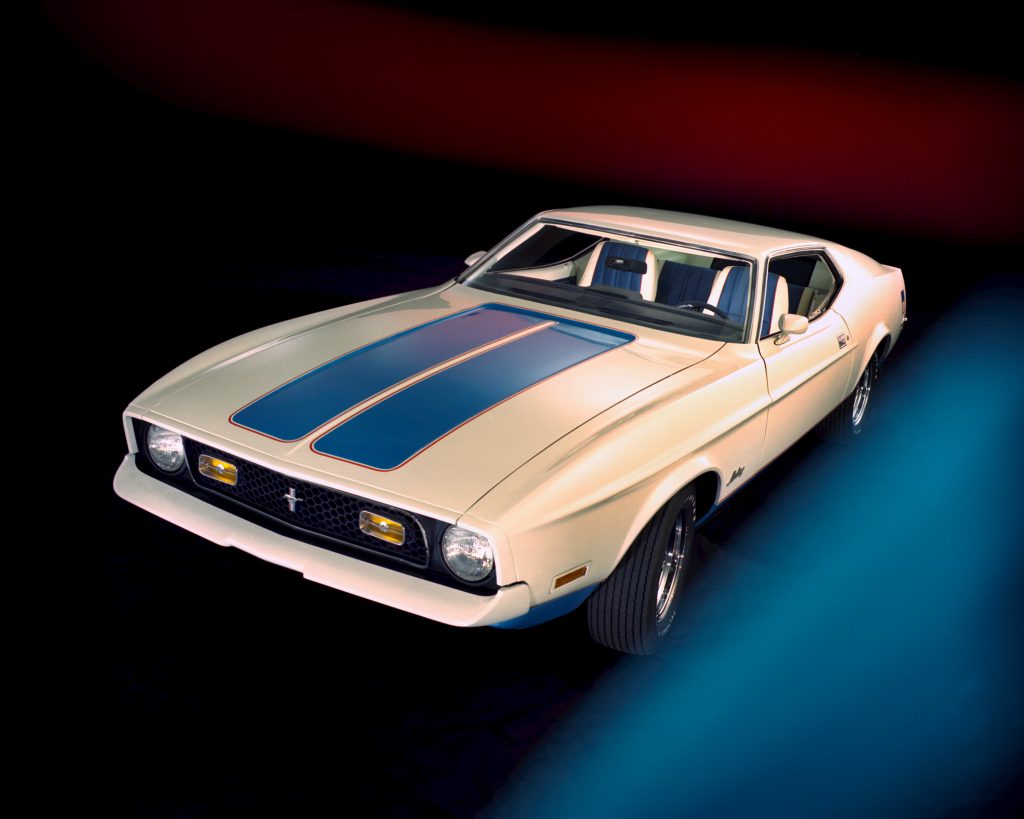
Ford created a red, white, and blue paint scheme for Mustangs, Pintos and Mavericks as an homage to the 1972 Olympic Team: this was the rebirth of the Mustang Sprint edition last seen in 1966. This trim package was sold in all three body styles and 9383 units were sold in 1972.
Exterior changes included white paint with blue and red accents and both a color keyed front bumper (white) and rear back panel (blue). USA (and Canada!) themed decals were applied on the rear quarter panels. Bright blue carpet and white vinyl or blue cloth bucket seats accentuated the interior. While the in-line six engine was standard, an optional performance package included Mustang’s competition suspension, Magnum 500 wheels and included either the Mustang’s 302 V-8 or the (rare) Q-code 351 V-8.



I am trying to buy a 73 mustang sprint it has the decals on the rear quarter panels and on top of car, it also has embroidered door panels and seat backs special edition with the flag please help is this real or a add on
I can show you what the seats look like in a fastback with fold down rear seat. Bought a set 45+ years ago and put them in my 73 Mach, which I still have today.
My Dad bought a new 1965 Mustang with a 289-4bbl automatic trans. White outside and Black interior. It came with front seat belts. Dad installed one seatbelt that went across me and my two sisters in the back seat! When I turned 16, Dad let me play hookey and took me to get my license. Once home he looked at me and said, “You want to go for a drive by yourself”. I said “sure”. He said “dont go near the school”. Where do you think I went to. Of course, the school. Later on he had a talk with me about the Firestone Wide Oval tires that were wearing out too fast. He looked at me and said “Son, WE need to go easier on the tires. We were both guilty of creating tire smoke. I beat most of my friends cars on a short drags. What a great car!!!!!!!
I love the Mustangs through 1970. 1971 and later just seem too long / large and then of course the engine choices start going away.
In June 1966, a co-worker asked me to come see his new car. It was a Acadia Blue Mustang convertible, 289, 2v, AT, pwr top, pwr steering, wire wheel covers, am radio, deluxe mirror group, black std interior and top. I told him I wished I could afford a new Mustang and mentioned I thought they would be collector cars someday. In 1978 the co-worker asked me if I still wanted the car. 67K miles all original except tires and battery. I still have the car with 110K, all original except top and exhaust replacement. Still has some original chips on the paint.